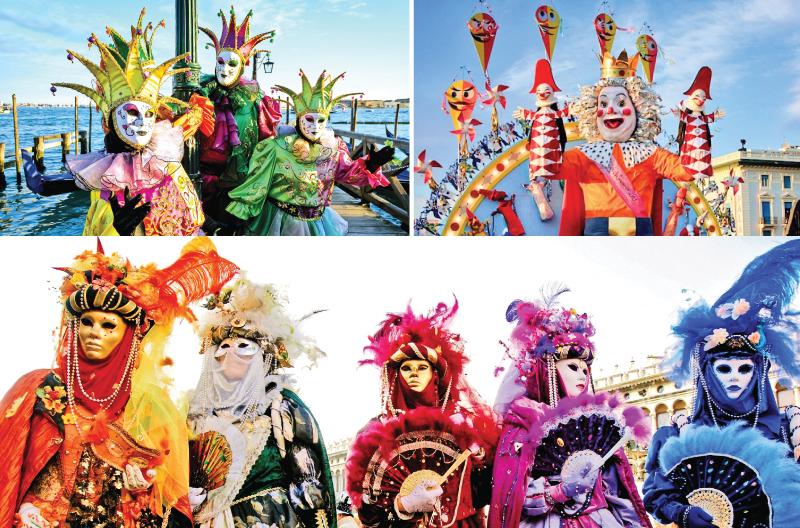
There are many festivals such as Vesak and Poson that we Sri Lankans have been celebrating for a long time. It is a well known fact that there are special features such as making Vesak lanterns for Vesak and creating a replica of Mihintale for Poson. Not only in our country but in many other countries as well, there are similar celebrations that are unique to those countries.
Every year in February, people in fancy masks adorned with colourful gemstones and bird feathers take to the streets to celebrate the centenary of Venice.
The ‘Festival of Venice’, traditionally celebrated in the last days before the beginning of the Great Lent, was declared a public event by the Northern Council of Venice by a bill passed in 1296 AD.
Chief Magistrate
 However, there is evidence that it has been celebrated by Venetians since the 5th century, and in 1094 CE, a charter signed by the then Chief Magistrate of Venice, Faliero, mentions the Festival of Venice.
However, there is evidence that it has been celebrated by Venetians since the 5th century, and in 1094 CE, a charter signed by the then Chief Magistrate of Venice, Faliero, mentions the Festival of Venice.
In the past, the ‘Festival of Venice’, celebrated for several weeks, was considered to be the last chance for the townspeople to have fun before the chorus, and almost all the townspeople spent their time dancing, singing and dining.
Fancy masks have also come to the fore to hide the differences between people from different walks of life, and even ordinary people have had the opportunity to ridicule the aristocracy during the ‘Festival of Venice’.
During this time there were performances by musicians, dancers, performers, and magicians throughout Venice, and even private parties were held in homes and small restaurants. Also, the most popular in theatres during the period of this celebration was said to be the masked drama.
Conquered
In the 18th century, information about the beauty of the ‘Festival of Venice’ spread around the world, bringing it international fame. Unfortunately, in the late 18th century, Venice was conquered, first by France and then by Austria, who banned the wearing of masks. But in some parts of Venice, the ‘Festival of Venice’ continued in secret, and in 1979 the Government re-established the old tradition in Venice.
It is estimated that around three million people visit Venice during the ‘Venice Festival’, which is now a popular tourist attraction. In the past as well as in the present, Venetians wear fancy masks and roam the streets, and the Government organises various cultural events in various parts of the city.
The two most important days of the ‘Festival of Venice’, which usually lasts several weeks, are considered to be the Thursday before the festival ends, or ‘Fat Thursday’ the day on which the festival ends, or ‘Fat Tuesday’.
Although festivals are held in several venues in Venice, the most spectacular carnival takes place in St. Mark’s Square.
Historical evidence suggests that Venetian masks, decorated with various coloured gemstones and bird feathers, have been in use since the beginning of the ‘Festival of Venice’. On the last Friday and Tuesday of the festival, prizes are awarded for the ‘Best Mask’ on a huge wooden stage.
